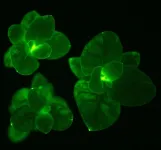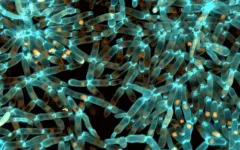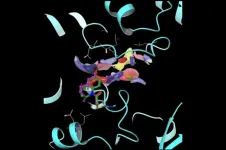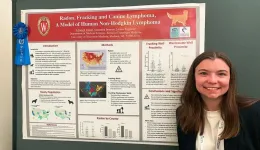The brain builds emotions regardless of the senses
In a new study, researchers at the IMT School for Advanced Studies Lucca deciphers the interplay of emotion and perception.
2024-03-08
(Press-News.org)
How much do our emotions depend on our senses? Does our brain and body react in the same way when we hear a fearful scream, see an eerie shadow, or smell a sinister odor? And does hearing an upbeat music or seeing a colorful landascape bring the same joy?
In an innovative study published in Science Advances, researchers have unveiled new insights into the intricate relationship between emotion and perception.
Led by a team of Italian neuroscientists from the IMT School for Advanced Studies Lucca, and conducted in collaboration with the University of Turin, the research project investigates whether the brain employs sensory-specific or abstract codes to construct emotional experiences.
"Emotion and perception are deeply intertwined, yet the exact mechanisms by which the brain represents emotional instances have remained elusive," says Giada Lettieri, researcher in psychology at the IMT School, and lead author of the study. "Our research addresses this fundamental question, providing critical insights into how the brain organizes and represents emotional information across different sensory modalities and as a result of past sensory experience."
To conduct the study, the researchers showed the movie 101 Dalmatians to a group of 50 volunteers, and tracked with functional magnetic resonance imaging the brain activity associated with the unfolding of the movie plot. The viewers of the movie in the scanner were both individuals with typical development and congenitally blind and congenitally deaf volunteers, who were presented with the audio play and the silent version of the movie, respectively. The researchers also asked a group of 124 independent participants to express and rate their emotions while watching the same movie outside the scanner, trying to predict the brain response of people with and without sensory deprivation during the experience of amusement, fear, and sadness, among other emotions.
“Including in the experiment individuals with congenital sensory deprivation – blind and deaf people – is a way to dissect and decipher the contribution of sensory experience to neural mechanisms underlying emotions” explains Luca Cecchetti, researcher at the IMT School, and senior author and supervisor of the study. “Our results show that emotions categories are represented in the brain regardless of sensory experience and modalities. In particular, there is a distributed network encompassing sensory, prefrontal, and temporal areas of the brain, which collectively encode emotional instances. Of note, the ventromedial prefrontal cortex emerged as a key locus for storing an abstract representation of emotions, which does not depend on prior sensory experience or modality."
The existence of an abstract coding of emotions in the brain signifies that even though we are tempted to believe that our emotions directly depend on what happens in the surrounding world, it is our brain that is wired to generate emotional meaning regardless of whether we are able to see or hear.
"In a world where sensory-deprived individuals are frequently overlooked, it is essential to understand how mental faculties and their corresponding neural representations can evolve and refine without sensory input, so to further advance the understanding of the emotion and the human brain," says Lettieri.
END
ELSE PRESS RELEASES FROM THIS DATE:
2024-03-08
In a striking new study published today in Science Advances, a team of synthetic biologists led by Karen Sarkisyan at the MRC Laboratory of Medical Sciences, have reported the discovery of multiple plant enzymes – hispidin synthases – that can perform the most complex reaction of the bioluminescence pathway. This discovery is a significant milestone towards figuring out whether plants can natively produce all the molecules required for light emission. It also means that the glow of bioluminescent plants can now be more closely aligned with their internal biology.
The technology reported in the paper is a hybrid ...
2024-03-08
Researchers have discovered a mechanism steering the evolution of multicellular life. They identified how altered protein folding drives multicellular evolution.
In a new study led by researchers from the University of Helsinki and the Georgia Institute of Technology, scientists turned to a tool called experimental evolution. In the ongoing Multicellularity Long Term Evolution Experiment (MuLTEE), laboratory yeast are evolving novel multicellular functions, enabling researchers to investigate how they arise.
The study puts the spotlight on the regulation of proteins in understanding evolution.
"By demonstrating the effect of protein-level ...
2024-03-08
University of Leeds news
For immediate release
Socially prescribed creative play boosts parents’ and children’s wellbeing
Socially prescribed creative play helps children and their parents develop new skills and promotes wellbeing, a new study has found.
The University of Leeds-led study evaluated a five-week programme of arts-based play, including singing and music-making, for families of children aged up to three. It found that parents benefited from developing social networks and sharing experiences with each other, as well as learning creative approaches to parenting. ...
2024-03-08
Quantum computers, which can solve several complex problems exponentially faster than classical computers, are expected to improve artificial intelligence (AI) applications deployed in devices like autonomous vehicles; however, just like their predecessors, quantum computers are vulnerable to adversarial attacks.
A team of University of Texas at Dallas researchers and an industry collaborator have developed an approach to give quantum computers an extra layer of protection against such attacks. Their solution, Quantum Noise Injection for Adversarial Defense (QNAD), counteracts the impact of ...
2024-03-08
Helicases are enzymes that unwind DNA and RNA. They’re central to cellular life, implicated in a number of cancers and infections—and, alas, extraordinarily difficult to target with drugs.
Now, new research provides a powerful platform for designing covalent inhibitors tailored to target helicases. The paper, published in the Journal of the American Chemical Society, describes how researchers used this innovative new platform to design molecules that take aim at helicases involved in COVID and certain cancers.
“High-resolution structural and biochemical data alone are not sufficient ...
2024-03-08
New research from Karolinska Institutet in Sweden shows how oestrogen protects against MASLD, a fatty liver disease that has increased dramatically during the current obesity epidemic. The study, published in Molecular Systems Biology, shows how a new drug under development could become a future treatment for fatty liver disease and liver cancer.
The global obesity epidemic has resulted in a dramatic increase in fatty liver, a disease in which fat that does not fit into fat cells is stored in liver cells instead.
Since last year, fatty liver due to obesity (and not excessive alcohol consumption) is known as MASLD (metabolic dysfunction-associated steatotic liver disease). ...
2024-03-08
DENVER/March 8, 2024 – As awareness of the health risks associated with radon and fracking exposure in connection to cancer continues to rise in human medicine, a recent study explored these ties with multicentric lymphoma, a prevalent canine cancer. Surprisingly, the study did not identify significant correlations between living near sources of environmental toxins, such as fracking by-products and radon, and dogs diagnosed with lymphoma.
The results of this study were published on Monday using data from Morris Animal Foundation’s Golden Retriever Lifetime Study, which enrolled dogs with multicentric lymphoma and matched unaffected ...
2024-03-08
We all know that bald eagles like fish. Few of us, however, picture them soaring over grasslands seeking out prairie dog snacks. In a new paper from the Journal of Raptor Research, lead author Courtney Duchardt and coauthors make the case that prairie dogs are an important resource for at least four species of raptors overwintering in the Southern Great Plains, bald eagles included. Their paper, titled “Overwintering Raptor Abundance and Community Composition in Relation to Prairie Dog Colonies in the Southern Great Plains,” explains the first broad scale look into the relationship between prairie dogs and their aerial predators, and illuminates ...
2024-03-08
New paper now published in Science proposes three measures the European Union should implement to improve open information, legality and sustainability of wildlife trade in the region.
Wildlife trade affects all kinds of species, from insects and fungi to large plants and mammals. The global trade of numerous species poses a significant threat to their survival, increasing their risk of extinction. The European Union is a major global hub for the illegal and unsustainable trade of those species whose international trade is not regulated by the Convention on International Trade in Endangered ...
2024-03-08
A team of scientists from the University of Exeter, Met Office and Imperial College have found a new way to calculate the total carbon emissions consistent with the Paris climate targets of 1.5oC and 2oC of global warming.
Although the exceptionally warm climate in 2023 was close to exceeding the 1.5oC level, the Paris targets relate to the average warming over ten or more years.
The new study answers the question: how much carbon have we got left before we pass the Paris limits?
About 15 years ago, climate scientists discovered a remarkably useful fact about climate change.
Despite the vast complexity ...
LAST 30 PRESS RELEASES:
[Press-News.org] The brain builds emotions regardless of the senses
In a new study, researchers at the IMT School for Advanced Studies Lucca deciphers the interplay of emotion and perception.






